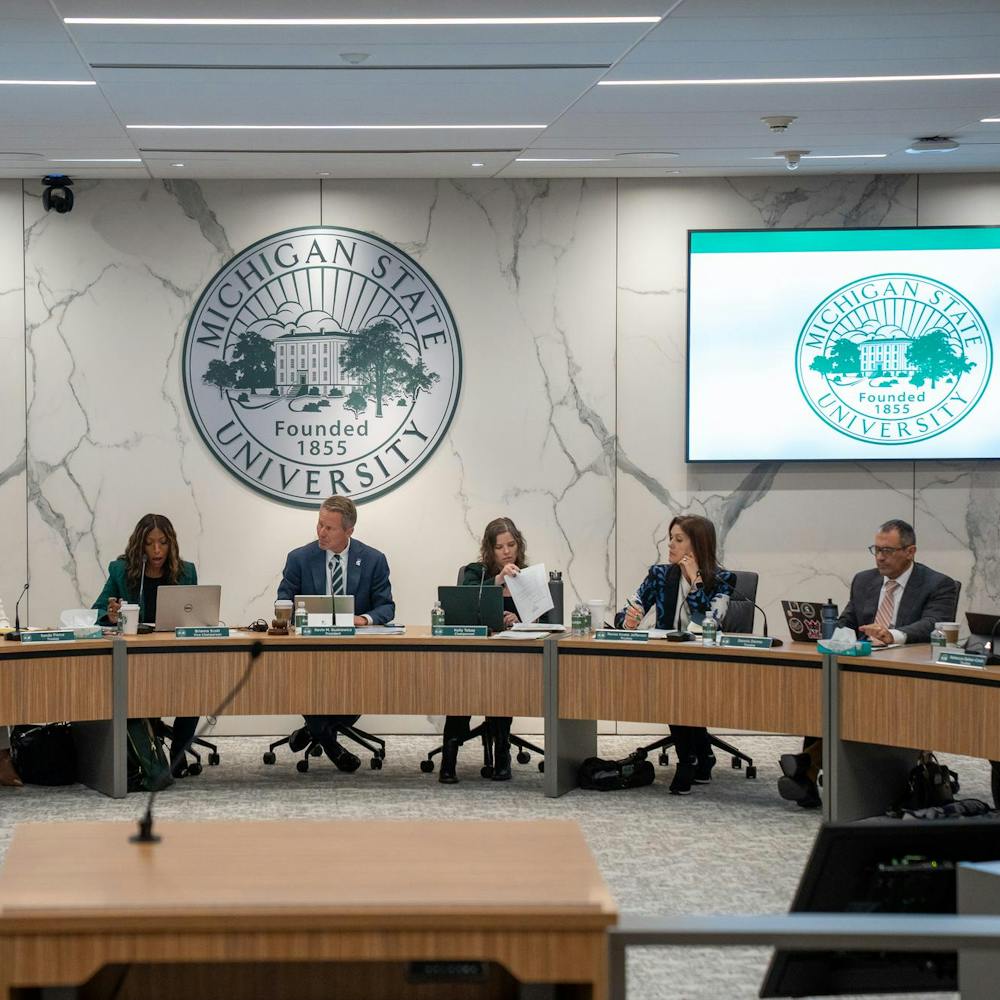Eating healthy is an important part of our everyday lives, and for university students, more information and options are needed to help students make healthier food choices.
Food Day, a day dedicated to empowering people to eat healthier, sustainable foods, was celebrated Oct. 24 at universities across the country, including MSU.
On Wednesday, MSU’s Ecological Food and Farm Stewardship Club and students from the sustainable agriculture and food systems specialization took to the rock on Farm Lane to educate students, faculty and staff on what constitutes “real food,” or food that is organic, free of genetically modified organisms, or GMOs, bought through fair trade and locally grown. The event began the Real Food Challenge, a competition for universities to buy at least 20 percent real food by the year 2020.
Hopefully, this competition spurs the university to action, because the addition of more real food into MSU cafeterias is a necessary step to promote a healthier lifestyle for students.
But how do we know what real food we already have on campus?
According to Residential and Hospitality Services, or RHS, more than half of MSU’s food is grown locally, which means within 250 miles, or regionally, within 600 miles. This supports local and regional business and is a good first step to promoting student health. Still, RHS unfortunately does not track data regarding the percentage of organic, genetically modified or fair trade food bought for the university.
For students to start eating more healthily, information regarding what is or isn’t good to eat should be easily available. Without it, we don’t know exactly how healthy the food provided in the cafeterias truly is.
It’s important for students to be educated and become more aware of what they are consuming, especially since it can have lasting health effects.
Organic food is grown free of chemicals and toxins, making it an overall much healthier choice. Consuming real foods will promote agricultural business in the area and create a more sustainable path for our food system.
It’s true, however, that organic food can be a more expensive purchase. So, if the university were to implement more organic foods, it’s important to do so in a cost-effective way that won’t cause a steep price increase on student meal plans.
But when considering overall health effects, paying a little more now is well worth putting safe, fresh food in our bodies. Purchasing organic food might be the next necessary step forward, but it can’t stop there. More progress needs to be made to help students on campus make healthier choices.
Collecting data and having it at the students’ disposal to increase awareness should be a priority for the university. Without that, it’s impossible to accurately assess what needs to be done to improve food options at MSU.
And by supplying cafeterias with more local and organic products without GMOs, students can will be able to make better decisions about what they eat.
Let’s hope efforts from these student groups open up discussions for sustainable and cost-effective ways to improve food options on campus.
Support student media!
Please consider donating to The State News and help fund the future of journalism.
Discussion
Share and discuss “Transparency, healthier food needed on campus” on social media.






